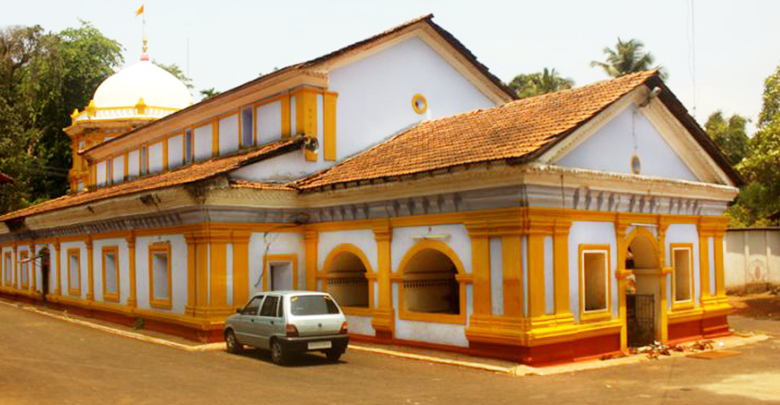The village of Naroa or Narve is tiny. To the uninformed, it looks like just another one of Goa’s many villages. But this village has played a significant part in Goa’s history and heritage and hides many archaeological delights. Narve is located on the easternmost tip of the very picturesque island of Divar and it is also the site of the very ancient Saptakoteshwar Temple.
Throughout Goa’s history, long before it was taken to be an Indian state, the land was ruled over by different kingdoms. Therefore it has had influences from the Portuguese, the Kadambas, the Vijayanagar kingdom and even the Sultans of the Bahmani kingdom through the years.
The Saptakoteshwar temple
Saptakoteshwar, a form of Shiva, was one of the chief deities of the Kings of the Kadamba dynasty in the 12th century. It is said that the then king built the temple for his queen who was a staunch devotee of this god. The Kadamba kings proudly used the title (Birudu) Shree Saptakotisha Ladbha Varaveera.
Sadly, soon after the temple was destroyed in 1352 when the Kadamba dynasty was overthrown by the Bahmanis. They ruled over Goa for around 14 years and it was during this period that most of the temples in Goa were destroyed. The Linga (a symbol of Shiva) from the Saptakoteshwar temple was believed dug up by the troops.
In 1367, the kingdom of Vijayanagar took over Goa, defeating the Bahmani army. During this period, all the temples, that had been destroyed, including the Saptakoteshwar temple, were rebuilt. Records found say that the temple was reconstructed by Madhava Mantri by the end of the 14th century.
Again, when the Portuguese conquered Goa in 1540, a large number of temples were again destroyed. Saptakoteshwar temple was again razed to its foundations. The stones taken from the temple were then used to construct the Nossa Senhora De Candelaria chapel at the same site. The Linga was also taken away by a man named Narayan Shenvi Suryarao and hidden in a place called Latambarsem where it remained for 3 years. It is said that it was smuggled away for safekeeping. It was later found on the wall of a well and still bears the marks made by the ropes used for drawing water at the time.
Reconstruction of the Saptakoteshwas temple
The Saptakoteshwar temple was eventually reconstructed when the Maratha king Shivaji came to power. It wasn’t until 1664 that this happened when he gave the order for the temple to be rebuilt at Narve (Naroa). The linga was also reinstalled in its rightful place. The stone plaque mentioning this order can still be seen near the temple entrance today.
The legend of the temple
There is a legend of how the name Saptakoteshwar came to be. It says that seven holy sages once set out to pray to Lord Shiva near the place where five holy rivers met the sea. They prayed for seven crore years at the end of which, Lord Shiva appeared to grant their wishes and agreed to stay at the place in one of his incarnations. This incarnation is known as Saptakoteshwar (sapt means seven and koteshwar means lord of crores).
In fact, the popular festival of Gokulashtmi is celebrated at this temple. It draws thousands of devotees from all over Goa. This day is considered to be the day on which Lord Shiva appeared in this incarnation to grant the wishes of the seven holy sages.
Architecture
The Saptakoteshwar temple has a small entrance hall with bells. The main five pillared hall is decorated with arches and is intricately painted with chandeliers glorifying the beauty of the ceiling while the sanctorum wall is made of plain wood. The presence of ancient ‘aggarshalas’ can be demonstrated by the fact that there are ruins of an arched crumbling structure behind the main temple. The popular festival of Lord Krishna, ‘Gokul Ashtami’ is celebrated here every year.
It’s worth making a visit to the island of Divar and even visiting Naroa. It’s peaceful and even though the island is small, one can wander around and visit the site of the original Saptakoteshwar temple and see the chapel built on its ruins. It’s a part of Goa’s long and rich history and there are remnants of it everywhere.
Information credit
https://www.goa.gov.in/places/saptakoteshwar-temple/
https://en.wikipedia.org/wiki/Saptakoteshwar_Temple
https://www.goaholidayhomes.com/information/sri-saptakoteshwar-temple.html
ItsGoa/SEPT/KDGP


